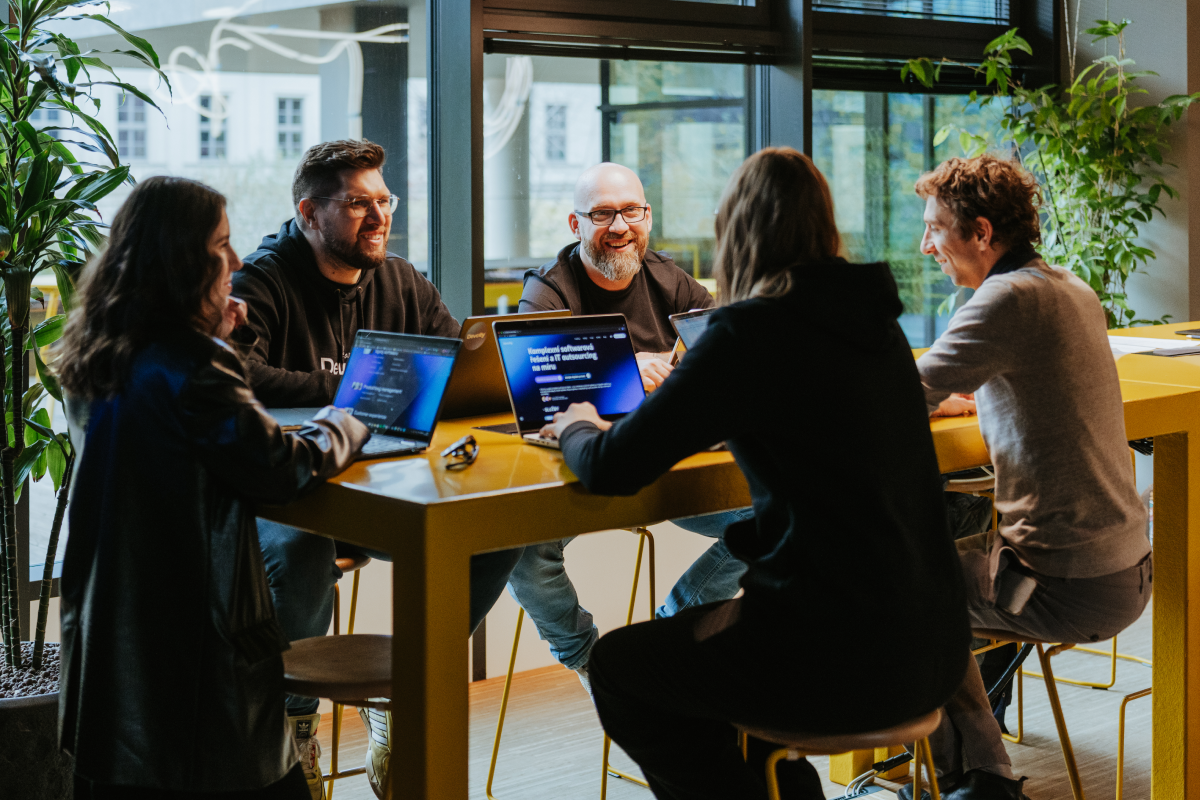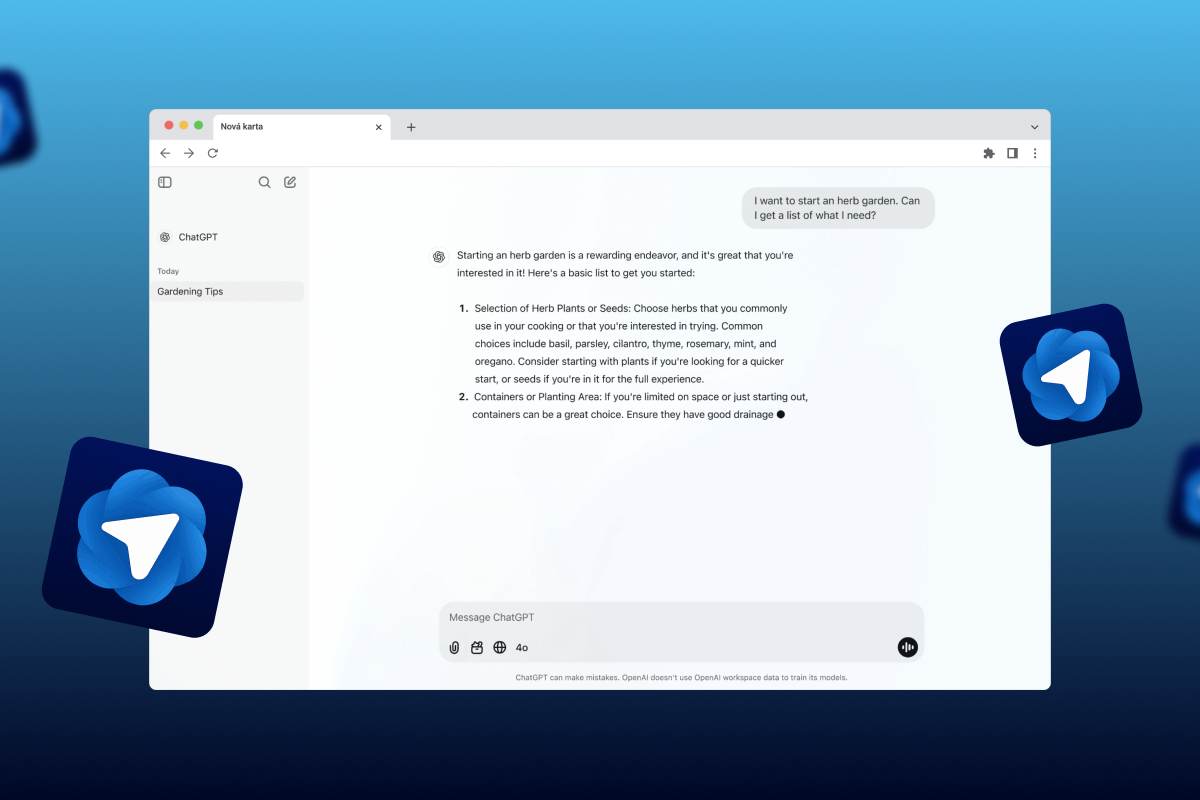Neueste Artikel

Nachricht
December 11, 2025
Wie wir das Team im Remote-Umfeld unterstützen
Psychologische Unterstützung wurde eingeführt, um Mitarbeitenden einen einfachen Zugang zu fachlicher Hilfe zu ermöglichen – besonders in einer Zeit, die für viele anspruchsvoll ist und in der psychologische Dienste nicht immer leicht verfügbar sind.

Nachricht
November 24, 2025
Wie Sie sich auf ein Vorstellungsgespräch vorbereiten
In Devcity konzentrieren wir uns auf Ihre Denkweise, Ihre Projekterfahrung und Ihre Fähigkeit, in einem Umfeld zu arbeiten, in dem sich Technologien und Anforderungen laufend verändern. Die Grundlage der Vorbereitung ist ein Verständnis dafür, womit wir uns bei Devcity beschäftigen. Wir entwickeln digitale Produkte und unterstützen Unternehmen dabei, technologische Innovationen durch fachliche Beratung einzuführen. Es ist nicht notwendig, alle Details zu kennen, aber es ist hilfreich zu wissen, welche Projekttypen bei uns überwiegen und mit welchen Technologien wir arbeiten.

Nachricht
October 11, 2025
Wie Atlas die arbeit mit browsern und daten verändern wird
KI kann helfen, Entscheidungen schneller zu treffen, Zeit zu sparen und sich auf die Arbeit zu konzentrieren. Doch diese Technologie wirft auch Fragen auf – von der Arbeitsweise bis zur Datensicherheit. Atlas arbeitet auf Basis Ihrer Eingaben, liest Webseiten, interpretiert Kontext und kann Aktionen ausführen, etwa Formulare ausfüllen, Dokumente vergleichen oder Berichte erstellen. Damit verändert sich auch die Art, wie wir mit dem Web interagieren. KI wird zum Vermittler, der entscheidet, welche Informationen Sie sehen und wie sie weiterverarbeitet werden.

Gespräche
July 21, 2025
Michal Brabec: Beim Projektmanagement geht es darum, ein Gleichgewicht zwischen Menschen, Zielen und Zeit zu finden
Michal Brabec arbeitet bei Devcity als Projektmanager und Product Owner. Er verfügt über mehr als 20 Jahre Erfahrung in der IT und war in verschiedenen technischen und leitenden Positionen tätig. Im Interview beschreibt er, wie er zum Projektmanagement kam, warum er agile Methoden bevorzugt und was es bedeutet, komplexe Verträge, beispielsweise im Energie- oder Cybersicherheitssektor, zu managen. Außerdem erläutert er seinen Ansatz zur Kundenkommunikation, zur Priorisierung von Aufgaben und die Vorteile einer langfristigen Zusammenarbeit.

Tech
July 15, 2025
Künstliche Intelligenz in der Gesundheitsdiagnostik
Künstliche Intelligenz wird im Gesundheitswesen immer häufiger eingesetzt. Sowohl Patienten als auch Ärzte nutzen sie, um Diagnosen zu stellen und Behandlungsempfehlungen zu geben – oft mit überraschend präzisen Ergebnissen. Doch manchmal kommt es zu Konflikten zwischen den Vorschlägen des Algorithmus und den Ergebnissen eines Experten.

Tech
July 3, 2025
Meta AI ermöglicht die öffentliche Anzeige überraschend persönlicher Anfragen von Benutzern
Seit April ist Metas KI-gestützte App verfügbar und bietet neben der Beantwortung von Fragen auch einen „Entdecken“-Tab – eine öffentliche Übersicht über die Gespräche anderer Nutzer. Neben gängigen Anfragen wie Reiserouten oder Rezepten finden sich auch durchaus sensible Fragen zu Gesundheit, Rechtsfragen oder persönlichen Beziehungen.

Tech
June 25, 2025
Meta stellt in Zusammenarbeit mit Oakley neue Smart Glasses vor
Meta setzt seine Bemühungen fort, das Segment der Smart Wearables zu erweitern, und bringt ein neues Brillenmodell auf den Markt, das in Zusammenarbeit mit Oakley entwickelt wurde. Dieser Schritt folgt auf die erfolgreiche Zusammenarbeit mit Ray-Ban, die vor einigen Jahren die erste stylische Brille mit intelligenten Funktionen auf den Markt brachte. Das neue Modell richtet sich in erster Linie an Nutzer, die einen aktiven Lebensstil bevorzugen, ist aber aufgrund seiner technischen Spezifikationen ein universelles Gerät, das für ein breites Kundenspektrum geeignet ist.

Tech
June 18, 2025
Billige KI-Tools könnten künftig hohe Kosten bedeuten
KI-gestützte Tools kosten heute nur noch einen Bruchteil menschlicher Arbeitskraft, was sich jedoch negativ auf die Jobchancen von Nachwuchskräften auswirken kann. Ein KI-Unternehmer erinnert sich, wie er 2007 als Junior-Entwickler mit einem Jahresgehalt von über 60.000 Dollar anfing. Heute können KI-Tools qualitativ besseren Code generieren als er damals – für etwa 120 Dollar pro Jahr.

Spiele
June 10, 2025
Microsoft betritt die Welt des Handheld-Gamings: ROG Xbox Ally und Ally X kommen
Nach Jahren der Spekulationen und Vorfreude hat sich Microsoft endlich entschieden, in das Segment der tragbaren Gaming-Geräte einzusteigen. Gemeinsam mit Technologiepartner ASUS bereitet das Unternehmen die Markteinführung zweier neuer Geräte vor: der ROG Xbox Ally und ihrer leistungsstärkeren Variante, der ROG Xbox Ally X. Die Ankündigung erfolgte während des Summer Game Fests im Juni und erregte sofort das Interesse der Medien und der Gaming-Community.

Tech
June 4, 2025
Neuer Fortschritt bei der Gehirn-Computer-Schnittstelle: Technologie an Menschen getestet
Ein Startup für Gehirn-Computer-Schnittstellen hat einen Kurzzeittest seines Geräts erfolgreich direkt am menschlichen Gehirn durchgeführt. Das Implantat wurde für etwa zehn Minuten eingesetzt und anschließend sicher entfernt. Dies ist der erste Schritt zu längeren Tests an Patienten.



